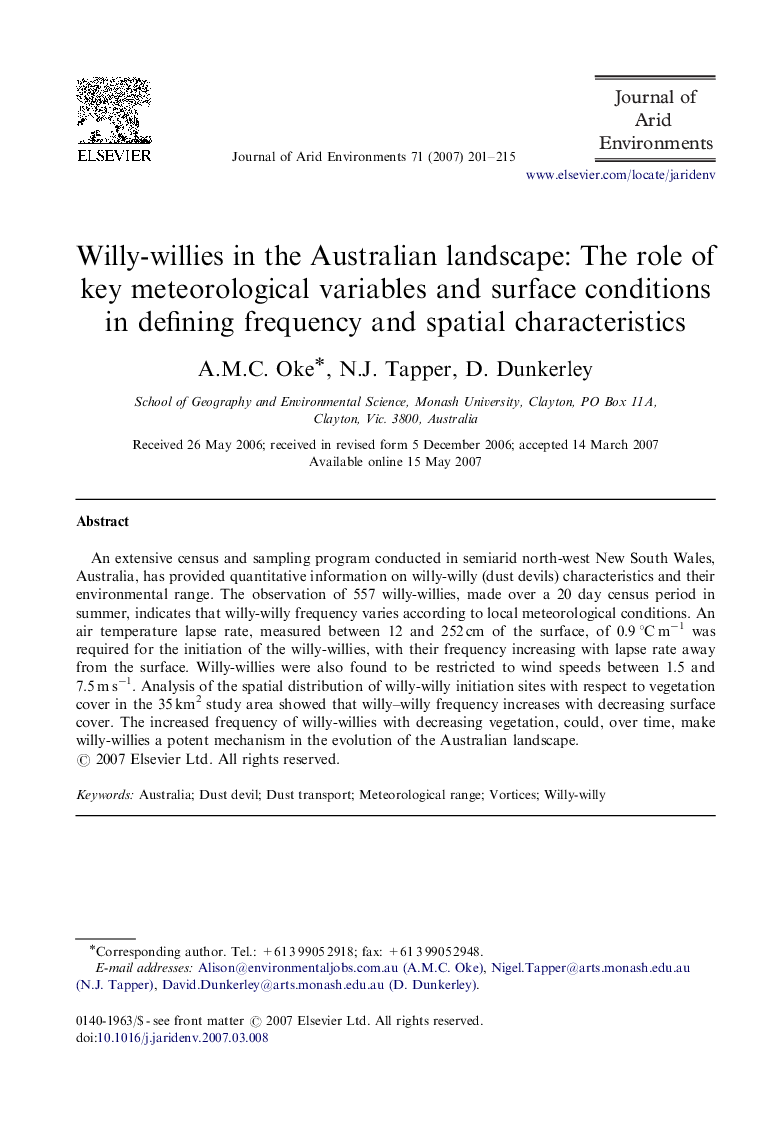| کد مقاله | کد نشریه | سال انتشار | مقاله انگلیسی | نسخه تمام متن |
|---|---|---|---|---|
| 4394245 | 1305526 | 2007 | 15 صفحه PDF | دانلود رایگان |

An extensive census and sampling program conducted in semiarid north-west New South Wales, Australia, has provided quantitative information on willy-willy (dust devils) characteristics and their environmental range. The observation of 557 willy-willies, made over a 20 day census period in summer, indicates that willy-willy frequency varies according to local meteorological conditions. An air temperature lapse rate, measured between 12 and 252 cm of the surface, of 0.9 °C m−1 was required for the initiation of the willy-willies, with their frequency increasing with lapse rate away from the surface. Willy-willies were also found to be restricted to wind speeds between 1.5 and 7.5 m s−1. Analysis of the spatial distribution of willy-willy initiation sites with respect to vegetation cover in the 35 km2 study area showed that willy–willy frequency increases with decreasing surface cover. The increased frequency of willy-willies with decreasing vegetation, could, over time, make willy-willies a potent mechanism in the evolution of the Australian landscape.
Journal: Journal of Arid Environments - Volume 71, Issue 2, October 2007, Pages 201–215